Brassia is a genus of orchids classified in the Oncidiinae subtribe. The genus was named after William Brass, a British botanist and illustrator, who collected plants in Africa under the supervision of Sir Joseph Banks. Its abbreviation in the horticultural trade is Brs.
Brassia species and its popular hybrids are common in cultivation, and are notable for the characteristic long and spreading tepals (in some clones longer than 50 cm), which lend them the common name "spider orchid".
This epiphytic genus occurs in South Florida, the West-Indies and tropical America, in wet forests from sea level to altitudes under 1500 m, with the Peruvian Andes as its center. Occurrence is mostly restricted to a certain area, but Brassia caudata can be found over the whole geographic area.
They have large elliptic-oblong pseudobulbs with one or two leaves at the apex, lateral, unbranched many-flowered inflorescences with small floral bracts. The lip is not attached to the column. The pollinarium shows a narrow stipe. There are two distichous, foliaceous sheaths around the base, from which the inflorescence emerges.
Brassia has a very specific method for pollination : it uses entomophily : pollination by insects and in this case specifically by female spider-hunter wasps of the genera Pepsis and Campsomeris. Mistaken by the mimicry of Brassia, the wasp stings the lip, while trying to grasp its prey without any success. By these movements the wasp comes into contact with the pollinarium, that then sticks to its head. By flying to another Brassia flower, this flower gets pollinated.
Brassia species and its popular hybrids are common in cultivation, and are notable for the characteristic long and spreading tepals (in some clones longer than 50 cm), which lend them the common name "spider orchid".
This epiphytic genus occurs in South Florida, the West-Indies and tropical America, in wet forests from sea level to altitudes under 1500 m, with the Peruvian Andes as its center. Occurrence is mostly restricted to a certain area, but Brassia caudata can be found over the whole geographic area.
They have large elliptic-oblong pseudobulbs with one or two leaves at the apex, lateral, unbranched many-flowered inflorescences with small floral bracts. The lip is not attached to the column. The pollinarium shows a narrow stipe. There are two distichous, foliaceous sheaths around the base, from which the inflorescence emerges.
Brassia has a very specific method for pollination : it uses entomophily : pollination by insects and in this case specifically by female spider-hunter wasps of the genera Pepsis and Campsomeris. Mistaken by the mimicry of Brassia, the wasp stings the lip, while trying to grasp its prey without any success. By these movements the wasp comes into contact with the pollinarium, that then sticks to its head. By flying to another Brassia flower, this flower gets pollinated.
List of species
- Brassia angustilabia
- Brassia antherotes
- Brassia arachnoidea
- Brassia arcuigera - Arching Brassia
- Brassia aurorae - Reddish Brassia
- Brassia bidens - Two-toothed Brassia
- Brassia boliviensis
- Brassia caudata - Tailed Brassia
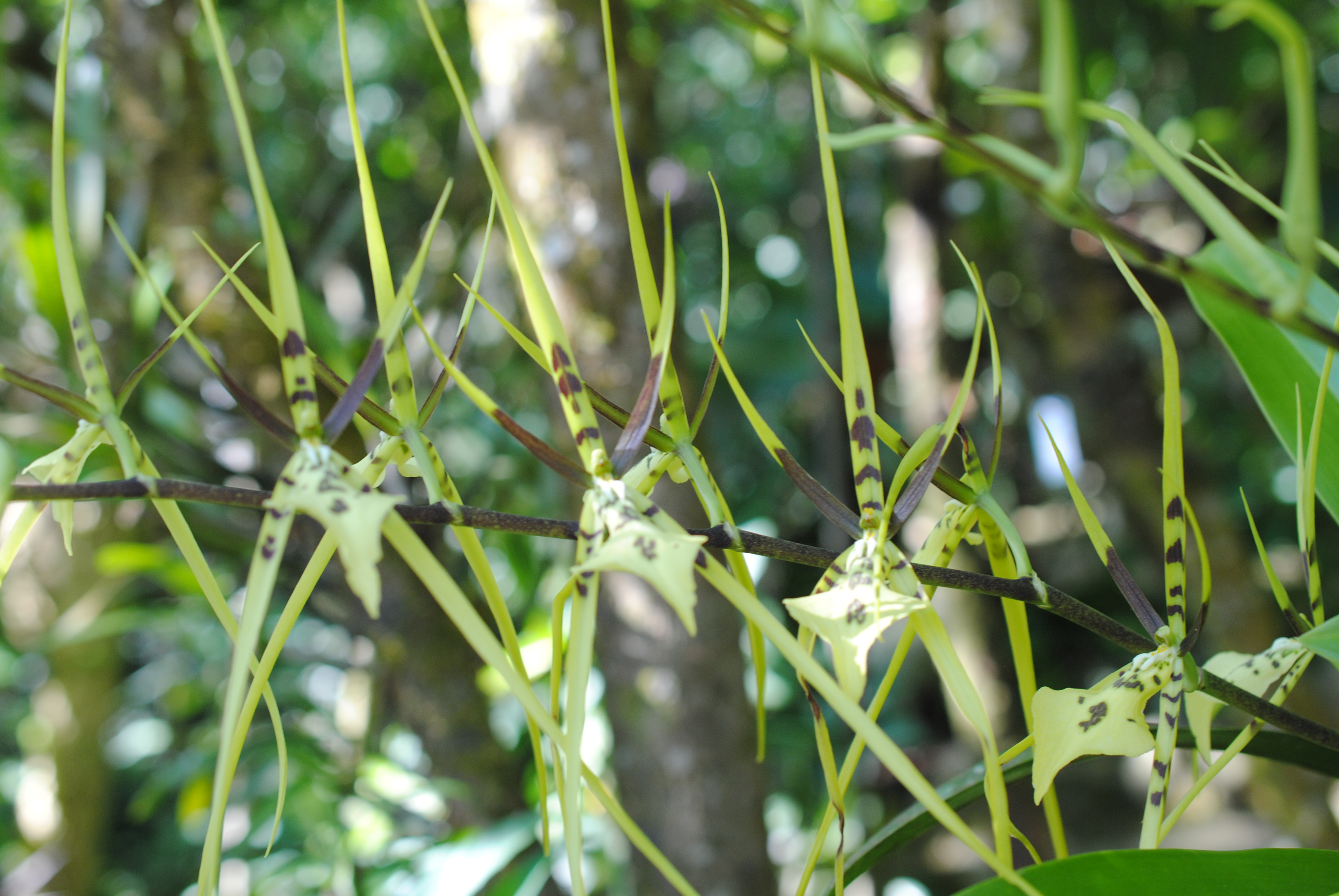
- Brassia cauliformis
- Brassia chloroleuca - Green-and-white Brassia
- Brassia cochleata
- Brassia cyrtopetala
- Brassia Edvah Loo '
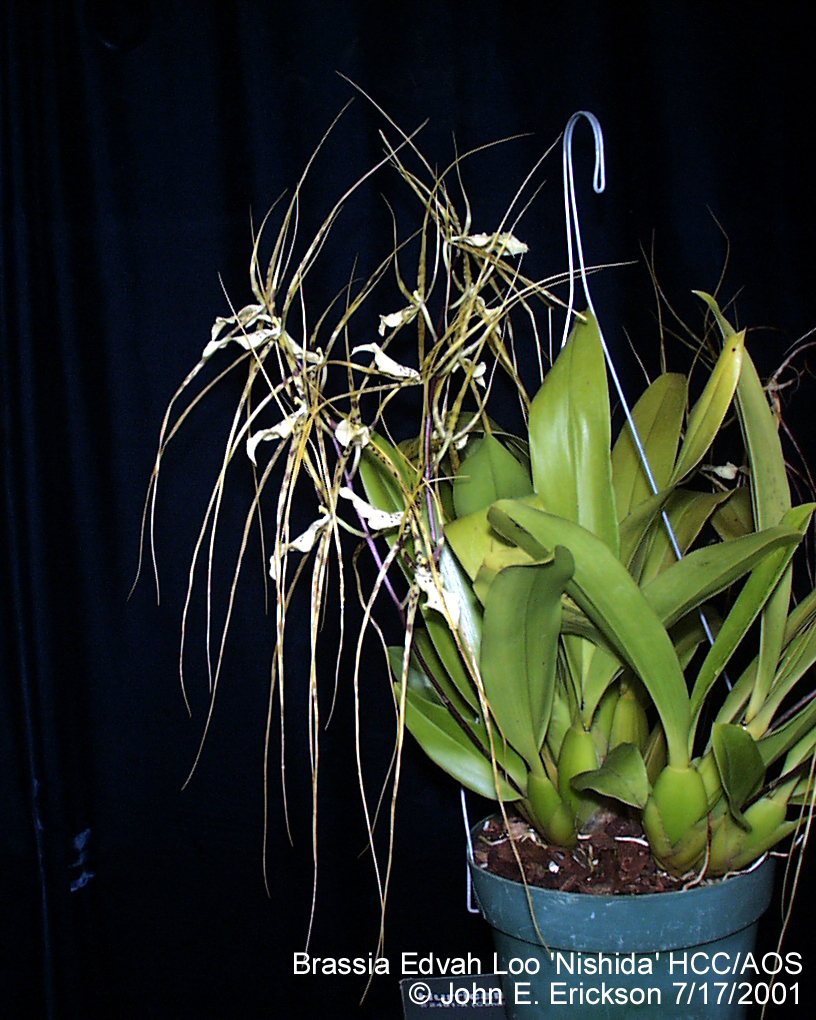
- Brassia filomenoi
- Brassia gireoudiana - Gireoud's Brassia
- Brassia helenae
- Brassia huebneri
- Brassia iguapoana
- Brassia jipijapensis - Jipijapa Brassia
- Brassia josstiana
- Brassia koehlerorum - Koehler's Brassia
- Brassia lanceana - Lance's Brassia
- Brassia maculata - Spotted Brassia
- Brassia neglecta - Overlooked Brassia
Brassia ocanensis

- Brassia "orchidée araignée"
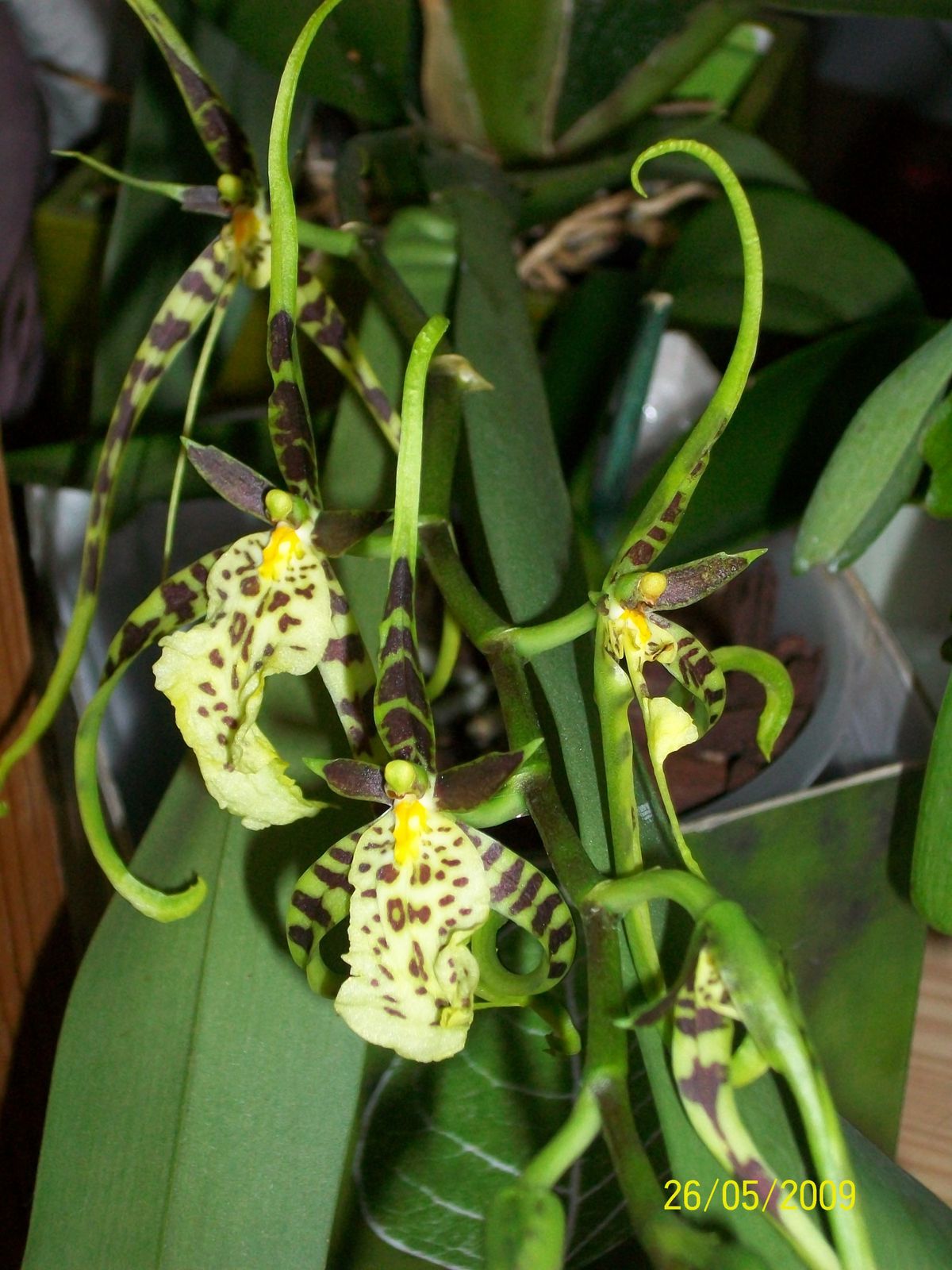
- Brassia pascoensis
- Brassia peruviana - Peru Brassia
- Brassia Rex
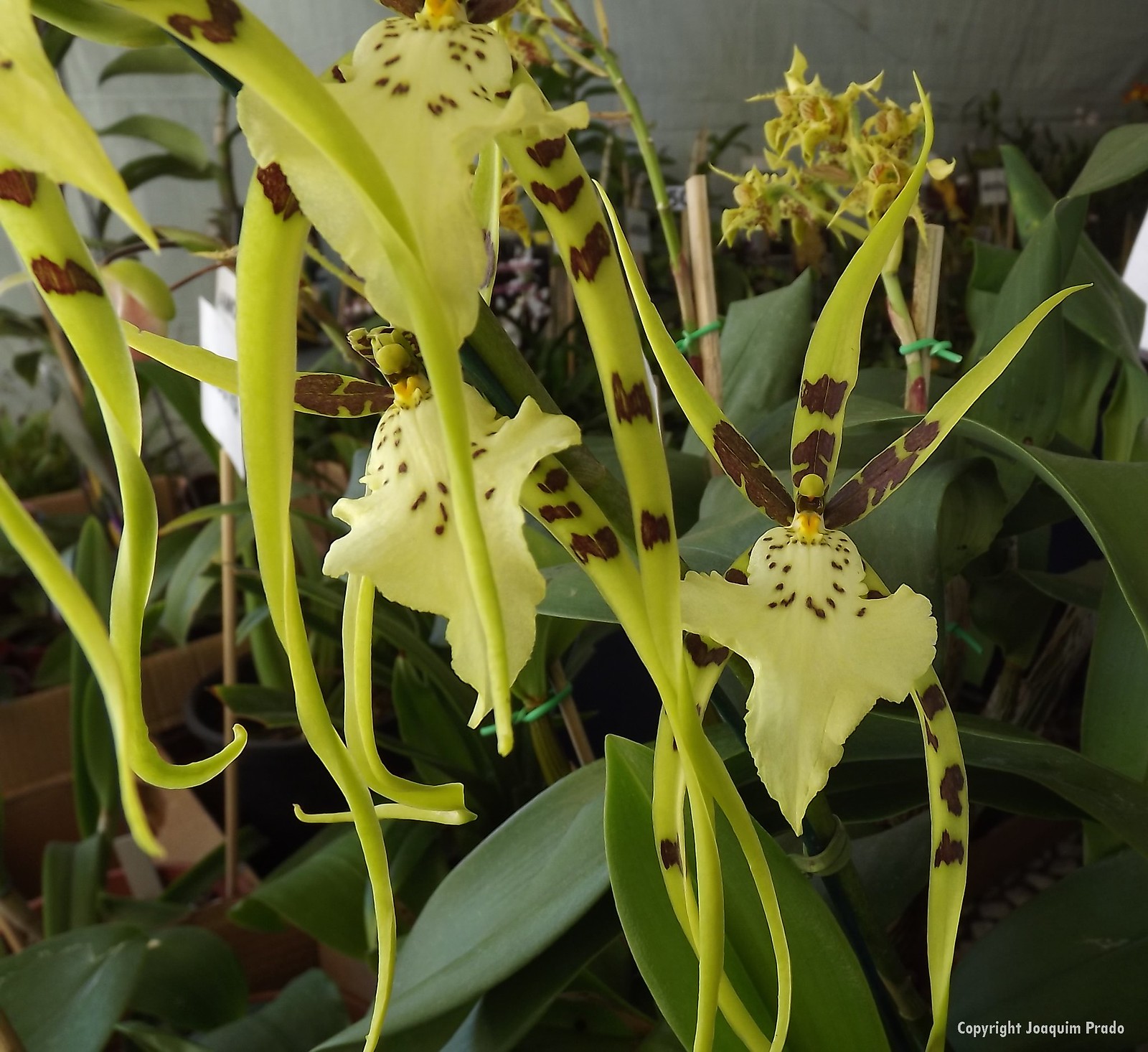
- Brassia rhizomatosa
- Brassia signata - Marked Brassia
- Brassia suavissima
- Brassia thyrsodes
- Brassia transamazonica
- Brassia verrucosa - Warty Brassia
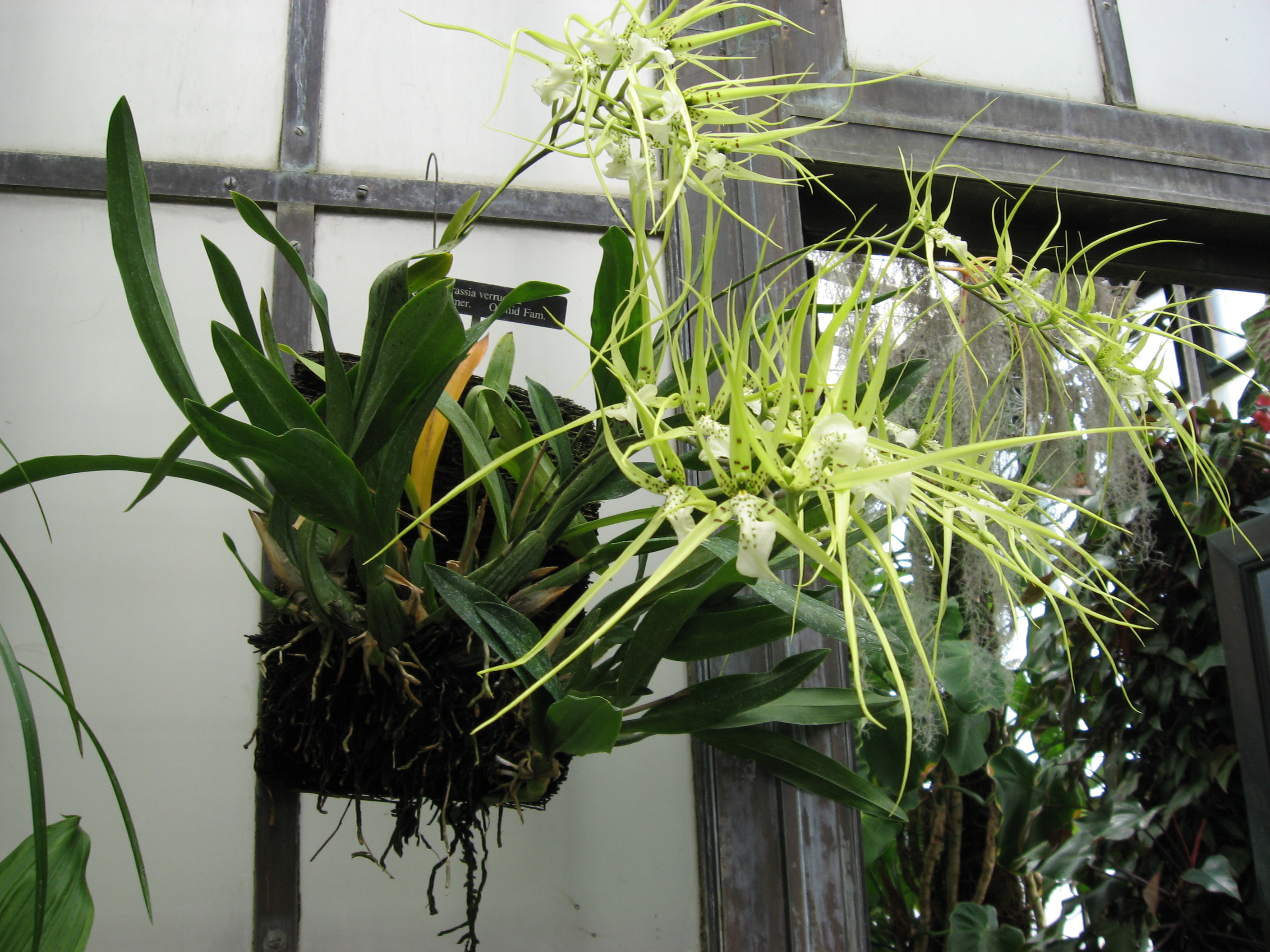
- Brassia villosa
- Brassia wageneri - Wagener's Brassia
- Brassia warszewiczii - Warscewicz's Brassia
Intergeneric hybrids
- ×Alexanderara (Brassia x Cochlioda x Odontoglossum x Oncidium)
- ×Aliceara (Brassia x Miltonia x Oncidium)
- ×Bakerara (Brassia x Miltonia x Odontoglossum x Oncidium)
- ×Banfieldara (Ada x Brassia x Odontoglossum )
- ×Beallara (Brassia x Cochlioda x Miltonia x Odontoglossum )
- ×Brapasia (Aspasia x Brassia)
- ×Brassada (Ada x Brassia)
- ×Brassidium (Brassia x Oncidium)
- ×Brassioda (Brassia x Cochlioda)
- ×Brassochilus (Brassia x Leochilus)
- ×Brilliandeara (Aspasia x Brassia x Cochlioda x Miltonia x Odontoglossum x Oncidium)
- ×Crawshayara (Aspasia x Brassia x Miltonia x Oncidium)
- ×Degarmoara (Brassia x Miltonia x Odontoglossum )
- ×Derosaara (Aspasia x Brassia x Miltonia x Odontoglossum )
- ×Duggerara (Ada x Brassia x Miltonia)
- ×Eliara (Brassia x Oncidium x Rodriguezia)[1]
- ×Forgetara (Aspasia x Brassia x Miltonia)
- ×Goodaleara (Brassia x Cochlioda x Miltonia x Odontoglossum x Oncidium)
- ×Hamiltonara (Ada x Brassia x Cochlioda x Odontoglossum )
- ×Johnkellyara (Brassia x Leochilus x Oncidium x Rodriguezia)
- ×Maclellanara (Brassia x Odontoglossum x Oncidium)
- ×Miltassia (Brassia x Miltonia)
- ×Norwoodara (Brassia x Miltonia x Oncidium x Rodriguezia)
- ×Odontobrassia (Brassia x Odontoglossum)
- ×Pettitara (Ada x Brassia x Oncidium)
- ×Roccaforteara (Aspasia x Brassia x Cochlioda x Odontoglossum)
- ×Rodrassia (Brassia x Rodriguezia)
- ×Rohriara (Ada x Aspasia x Brassia)
- ×Sanderara (Brassia x Cochlioda x Odontoglossum)
- ×Sauledaara (Aspasia x Brassia x Miltonia x Oncidium x Rodriguezia)
- ×Schafferara (Aspasia x Brassia x Cochlioda x Miltonia x Odontoglossum)
- ×Shiveara (Aspasia x Brassia x Odontoglossum x Oncidium)
- ×Wingfieldara (Aspasia x Brassia x Odontoglossum)
Nhận xét
Đăng nhận xét